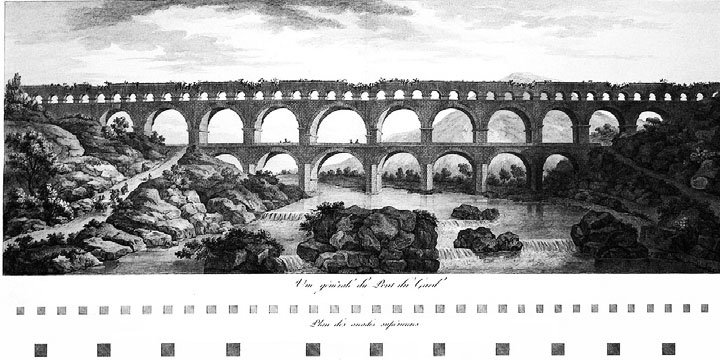Downloads
DOI:
https://doi.org/10.7480/rius.3.839Abstract
In a critical review this chapter shows how the Yokohama Ferry Terminal by Foreign Office Architects crossed the three distinct realms of ‘infrastructure’, ‘architecture’ and ‘landscape’. This key individual project dissolved disciplinary borders between the three disciplines and achieved new methodical grounds for design. It is a precedent in a general shift in the development of the design disciplines of the built environment. The single project shows how deep conceptual shifts affect the disciplinary assumptions that initially limited this task for architects–and how versatile the strategies of infrastructure and landscape are in architecture. While the Yokohama Ferry Terminal is at first sight simply a passenger terminal, it is also an infrastructural transport-related building, used most of the time as a garden-like public space. At first elaborating on definitions of the three terms ‘infrastructure’, ‘landscape’, and ‘architecture’, the article will question how plausible and useful these divisions between the categories are for designers, or if we should rather focus on the crossings of these divisions. A discipline that wants to be dynamic is to be explored at its edges as well as preserved in its core. Such crossings become especially relevant in ambitious projects. With this example at hand, this chapter explores the disciplinary framework and will touch upon design methodological definitions. The case study is valuable to show the full depth of field that architecture with landscape methods can have within contemporary architectural production and how landscape and infrastructure can merge in new kinds of public artifacts beyond object centered design. The themes that make the Yokohama Ferry Terminal’s form or ‘scape’ can be summarised under the term ‘flow’.
How to Cite
Published
Issue
Section
License
Copyright (c) 2015 Daniel Jauslin

This work is licensed under a Creative Commons Attribution 4.0 International License.
References
AA Files 26 (1993) Office for Metropolitan Architecture: Two Libraries for Jussieu University, Paris
AA Files 29 (1994) Foreign Office Architects: Yokohama International Port Terminal and other projects
Algarve (2013) Slogan on http://www.visitalgarve.pt [accessed October 2013]
Allen, S. & M. McQuade (eds.) (2011) Landform Building: Architecture’s New Terrain. Baden & New York, Lars Müller
Angélil, M. & A. Klingmann (1999) Hybride Morphologien: Infrastruktur, Architektur, Landschaft. Daidalos 73 (10): 16-24
Balmori, D. & J. Sanders (2011) Groundwork: Between Landscape and Architecture. New York, Monacelli
Banham, R. (1959) City as Scrambled Egg. Cambridge Opinion 17
City of Yokohama (1995) Yokohama International Terminal International Design Competition (Jury Report) Yokohama
Elser, O. et al. (2012) Das Architekturmodell. Werkzeug, Fetisch, kleine Utopie; The Architectural model. Tool, Fetish, Small Utopia. Katalog zur Ausstellung, DAM Deutsches Architektur Museum. Frankfurt a.M, Scheidegger & Spiess
Deleuze, G. & F. Guattari (1993) A Thousand Plateaus: Capitalism and Schizophrenia. Minneapolis, University of Minnesota Press
Deleuze, G. (1993) The Fold: Leibniz and the Baroque Minneapolis. University of Minnesota Press
Eisenman, P. et al. (1992) Frankfurt Rebstockpark: Folding in time. München, Prestel
Frampton, K. (1980) Modern Architecture. London, Thames and Hudson
Frampton, K. (1999) Megaform as Urban Landscape. Ann Arbor Michigan, The University of Michigan Alfred Taubman College of Architecture and Urban Planning
Frampton, K. (2011) ‘This building intrigues me, because it is many things at once’. Transcript by the author Lecture at Roger Williams University, Bristol Rhode Island http://www.youtube.com/watch?v=tI9h9bUJxPE [accessed October 2013]
Hunt J.D. (2000) Greater Perfections: The Practice of Garden Theory. Philadelphia, University of Pennsylvania Press
Lee, S. & R. Baumeister (2007) The Domestic and the Foreign in Architecture. Rotterdam, 010
Ruby, A. (2002) Groundscapes: The rediscovery of the ground in contemporary architecture. Barcelona, Gustavo Gilli
Krauss, R. (1979) Sculpture in the Expanded Field. October 8: 30-44
Koolhaas, R. et al. (1995) S,M,L,XL. Rotterdam, 010
Lynn, G. (ed.) (1993) Folding in Architecture. Architectural Design Profile 102
Maki, F. (1964) Investigations in Collective Form: Three Paradigms. Reprint in: Nurturing dreams: collected essays on architecture and the city (2008). Boston, MIT, p 44-56




